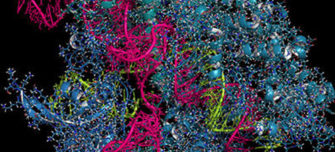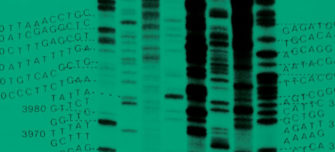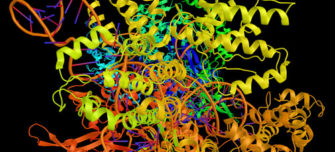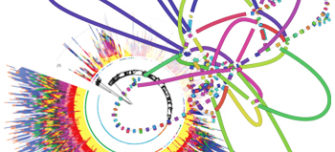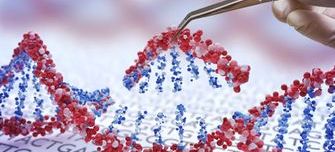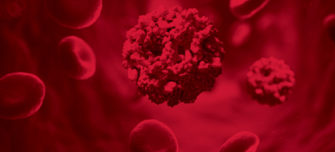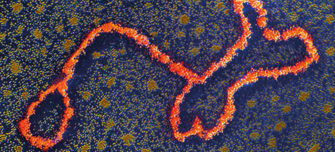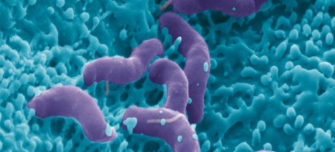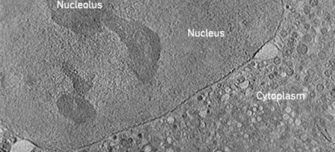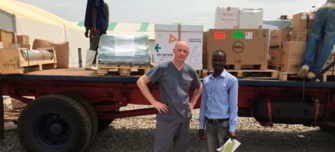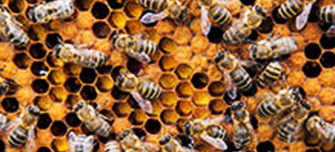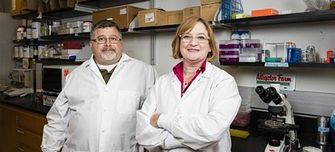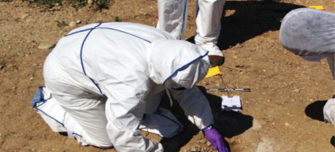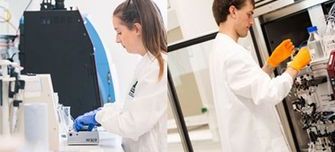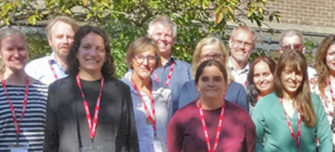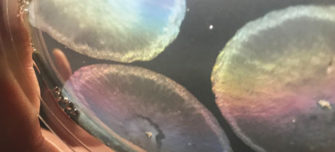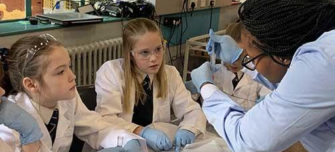Resources and further reading
-
Microbiology and genetics
The genetic plasticity of microbes enables their survival. This Microbiology Today article outlines some of the advances that have been made in modern biotechnology and the significance of this research to microbiology.
-
CRISPR Journal Collection
Explore our journal collection dedicated to articles that focus on CRISPR.
-
Methods and Software Journal collection
This journal collection brings together articles describing novel experimental, bioinformatics, modelling and statistical approaches to the analysis of microbial genomics data.
-
Mycobacteria: journal collection
Guest-edited by Dr. Riccardo Manganelli, this collection of keynote research articles will highlight all aspects of mycobacterial biology, with particular focus on physiological aspects, such as stress response mechanisms, regulatory networks, and metabolic pathways, that might lead to a better understanding of the intriguing aspects of mycobacterial host-pathogen interactions.
-
Defra: the regulation of genetic technologies
The Microbiology Society has submitted a response to the DEFRA Public Consultation on the Regulation of Genetic Technologies, which is assessing whether gene editing should be regulated in the same way as genetic modification, and is gathering views on the wider regulatory framework governing genetically modified organisms (GMOs).
-
Antibiotic could be repurposed and added to tuberculosis treatment arsenal
Research has found fidaxomicin, an antibiotic usually used to treat bowel infections, prevents growth of resistant strains of Mycobacterium tuberculosis (MTb) in the lab.
-
Foodborne diseases: sequencing for answers
Due to advances in sequencing technologies, the number of bacterial genome sequences in databases is increasing exponentially, but relatively few studies have sought to link bacterial genotype and phenotype during infection. We explore why in this article featured in Microbiology Today.
-
Engineering transgenic mosquitoes to prevent disease transmission
In this article in Microbiology Today, researchers share how using population modification and genetic modification, could potentially help prevent disease transmission.
-
The Master Puppeteer? The impact of microbes on brain and behaviour
The microbiota is not only capable of producing a range of neurotransmitters and neuroendocrine compounds (hormones), but is also the major source for short-chain fatty acids, which can regulate host metabolism and gene expression, as we explore in this article featured in Microbiology Today.
-
Genome segregation in heat-loving archaea
Archaea are remarkable objects of investigation due to their exquisitely distinctive biological properties and macromolecules. In this Microbiology Today article, we explore how the fundamental process of genome segregation remains a terra still vastly incognita in this branch on the sprawling tree of life.
-
Using X-rays to look inside the cell
Protein misfolding disorders are a class of diseases associated with unchecked protein misfolding and aggregation. The two examples we focus on are Huntington’s disease and Alzheimer’s disease, which are both neurodegenerative, protein misfolding disorders and share common features.
-
Diagnosing and sequencing Ebola in Sierra Leone
Professor Ian Goodfellow reflects on establishing one of the first diagnostic laboratories in Sierra Leone in this Microbiology Today article.
-
Candida: living with a killer fungus
In this Microbiology Today article, we explore how next generation genome sequencing, and a constantly improving set of genetic tools including CRISPR Cas9, are making our knowledge of the connections between the Candida genotype and (pathogenic) phenotype ever more accessible.
-
Using microbes for precision insect pest control
It is time to reduce the environmental footprint of insect pest control. Find out why bacteria are the ideal tools for developing ‘smart’ precision bio-insecticides and preventing disease transmission by insects in this Microbiology Today article.
-
The shape-shifting superhero: Dictyostelium discoideum
Dictyostelium discoideum is one of the social amoebae, a group of fascinating eukaryotic microbes with superhero, shape-shifting qualities, which is able to switch between a unicellular and a multicellular existence.
-
The curious meeting of two partners: the squid–vibrio symbiosis
In this Microbiology Today article, we learn how sequencing the genomes of Euprymna scolopes and other Euprymna spp. will allow the use of comparative genomics approaches to reveal novel host-derived factors that promote symbiont specificity.
-
Viruses as the raw material for eukaryote evolution: lessons from parasitic wasps
In this article featured in Microbiology Today Sequencing of genomes has revealed that all types of viruses (not only retroviruses that naturally integrate into their host’s genome) do integrate on some occasions into the chromosomes of their hosts.
-
Diatoms: glass-dwelling dynamos
The diversity of diatoms in terms of morphology and habitat show that they are highly adaptable and have been able to take advantage of different environments in order to evolve and spread since their origin about 240 million years ago. With genome sequencing of four diatom species, insights into their success have been revealed.
-
Adding dynamics to structure/function studies in microbiology
True collaborations between biologists and physicists can lead to fascinating insights into biological systems, especially when exciting new techniques can be applied to biology. In this Microbiology Today article, we explore adding dynamics to structure/function studies in microbiology: two-dimensional infrared spectroscopy.
-
Cracking the genetic code of our cities
The past few decades have witnessed a surge in microbiome and metagenomics studies, all of which are intent on elucidating the vast invisible world beneath our fingertips. With the advent of next-generation sequencing technologies, we are able to study this world like never before.
-
Accelerated clinical and technology trials in response to the Ebola virus epidemic
Read about the researchers who sequenced Ebola virus genomes from newly diagnosed cases quickly enough to provide vital information to guide the response to this tragic epidemic, which had already claimed over 10,000 lives.
-
DNA fingerprinting algae
The Culture Collection of Algae and Protozoa (CCAP) is the largest collection of marine and freshwater algae, protists and seaweed in Europe. Housing over 3,000 living strains, it is the most diverse collection of its kind in the world and is used as a source of genetic material and natural products for medical and life sciences research, as well as for industry.
-
Uncovering the genetics of a foul disease
Researchers have been investigating the genetic components of European foulbrood (EFB), one of the major pathogens of honey bees (Apis mellifera).
-
Genome editing and the cultural imagination
Genome editing – the deliberate alteration of selected DNA sequences in living cells – is increasingly at the forefront of scientific and public discussion, and has enormous potential to help us treat or avoid disease.
-
JMM Editor’s Choice: using Komodo dragon DNA to create antibiotics
Dr Marcello Riggio discusses “Komodo-dragon cathelicidin-inspired peptides are antibacterial against carbapenem-resistant Klebsiella pneumoniae”.
-
Managing the myths – the CSI effect in forensic science
Forensic microbiology has recently emerged as a separate discipline, using a range of tools from specific culture methodology to whole genome sequencing (molecular techniques used for detecting the microbes’ genetic material). We explore more in this article in Microbiology Today.
-
Assessment of the impact of KDO metabolism on gut homeostasis
Undergraduate student, Lydia Pouncey from the University of East Anglia and Dr Andrew Bell discuss their project which aimed to clone a gene coding for an aldolase predicted to metabolise the sugar KDO.
-
Using genetics to identify new antifungal targets
Fungal infections have dramatically increased in the last two decades, particularly associated to the growing immunocompromised population. The available arsenal of antifungals is limited by the low selective toxicity, because the fungi are eukaryotic organisms, as this journal article explores.
-
Sequencing the genome of Streptococcus pneumoniae
Whole genome sequencing has revolutionised many fields of study, not least microbiology. In this blog, Carmen Sheppard talks about her workshop on whole genome sequencing of Streptococcus pneumoniae in a public health reference laboratory.
-
Imaging the topology of DNA
James Provan, PhD student at the University of Glasgow was awarded a Research Visit Grant by the Microbiology Society. He used this grant to visit the lab of Dr Alice Pyne, expert in atomic force microscopy at University College London. Here, James describes his research and the findings he collected during his research visit to Dr Pyne's lab.
-
Evaluation of genome transmission in the parasite Leishmania after ablation of key DNA replication factors
David Anderson discusses his PhD project, which focused on testing the hypothesis that DNA replication in Leishmania is not solely dependent on origin recognition complex (ORC)-defined origins.
-
Modifying Permeability of Salmonella Microcompartments
This paper, titled ‘Engineering the PduT shell protein to modify the permeability of the 1,2-propanediol microcompartment of Salmonella’ was chosen as Microbiology Editor’s Choice of the month.
-
DNA and Diversity
Dr Linda Oyama discusses her time teaching primary school girls about DNA along with a team of female scientists from Queen's University Belfast.
-
AlgP in Pseudomonas aeruginosa
This paper describes an ongoing molecular detective story to solve the mystery of AlgP. The AlgP protein of the opportunistic pathogen Pseudomonas aeruginosa originally came to attention because of its potential role in the regulation of alginate production in mucoid strains.
-
Social interactions in Pseudomonas aeruginosa
In this interesting article, Gurney and colleagues reported the evolution of a Pseudomonas aeruginosa isolate able to “circumvent metabolic incentives to cooperate and act as a combinatorial signalling cheat, with higher fitness in competition with its ancestor” opening a new perspective in the evolution of bacterial social behaviour.
-
Microbe Talk: Microbial genomics amidst the Arctic crisis
In this podcast, we speak to Dr Arwyn Edwards; an Arctic microbiologist based at Aberystwyth University about his published paper in Microbial Genomics entitled ‘Microbial genomics amidst the Arctic crisis’.
Image credits:
iStock/Molekuul
iStock/Oleksandr_Kolos
George Mason University
Martin Krzywinski/Science Photo Library
Alma McKeown
iStock/ClaudioVentrella
Tim Miyashiro
Juergen Berger/Science Photo Library
Michele Darrow
Adam Gasson
David Kirkham
iStock/Tetiana Lazunova
Lorna Dawson
Mehak Rafiq
Afshinnekoo et al., 2015
Ian Goodfellow
iStock/vchal
Neil Gow
Steve Gschmeissner/Science Photo Library
Eye of Science/Science Photo Library
Power and Syred/Science Photo Library
Danny Ward
Justin Panich

